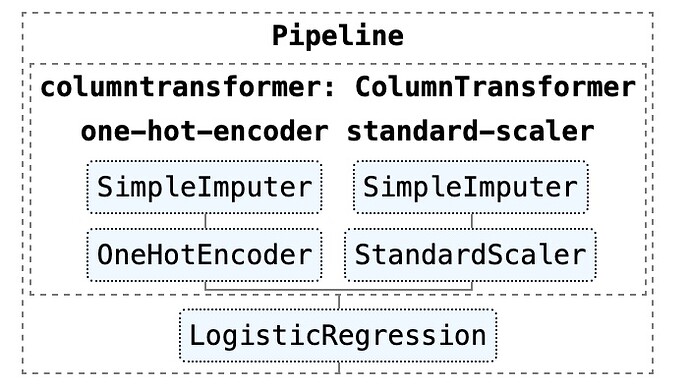Hello, i suppose i have a problem with the categorical data, but:
-
how can i debug it ? what data are involved ?
-
i think i have a problem with the replacement of missing values but i dont know where ?
Thank you for help
My code is here:
# -------------Processing of categorical data - Traitement des données de catégories
from sklearn.compose import make_column_selector as selector
categorical_columns_selector = selector(dtype_include=object)
categorical_columns = categorical_columns_selector(data)
data_categorical = data[categorical_columns]
#remplacement valeurs manquantes
imp_freq = SimpleImputer(strategy="most_frequent")
imp_freq.fit(data_categorical)
# Replace missing values in data - remplacement dans le tableau initial des colonnes de catégories avec les données manquantes
data[categorical_columns] = imp_freq.transform(data_categorical)
# ----------- Processing of numerical data - Traitement des données numériques
numerical_features = [
"LotFrontage", "LotArea", "MasVnrArea", "BsmtFinSF1", "BsmtFinSF2",
"BsmtUnfSF", "TotalBsmtSF", "1stFlrSF", "2ndFlrSF", "LowQualFinSF",
"GrLivArea", "BedroomAbvGr", "KitchenAbvGr", "TotRmsAbvGrd", "Fireplaces",
"GarageCars", "GarageArea", "WoodDeckSF", "OpenPorchSF", "EnclosedPorch",
"3SsnPorch", "ScreenPorch", "PoolArea", "MiscVal",
]
numerical_preprocessor = StandardScaler()
data_numerical = data[numerical_features]
# building pipeline and cross validation
preprocessor = ColumnTransformer([
('one-hot-encoder', categorical_preprocessor, categorical_columns),
('standard-scaler', numerical_preprocessor, numerical_features)])
model_global = make_pipeline(preprocessor, LogisticRegression(max_iter=500))
cv_results = cross_validate(model_global, data, target, cv=5)
print(cv_results)
scores = cv_results["test_score"]
print(f"The mean global cross-validation accuracy is: {scores.mean():.3f} +/- {scores.std():.3f}")

